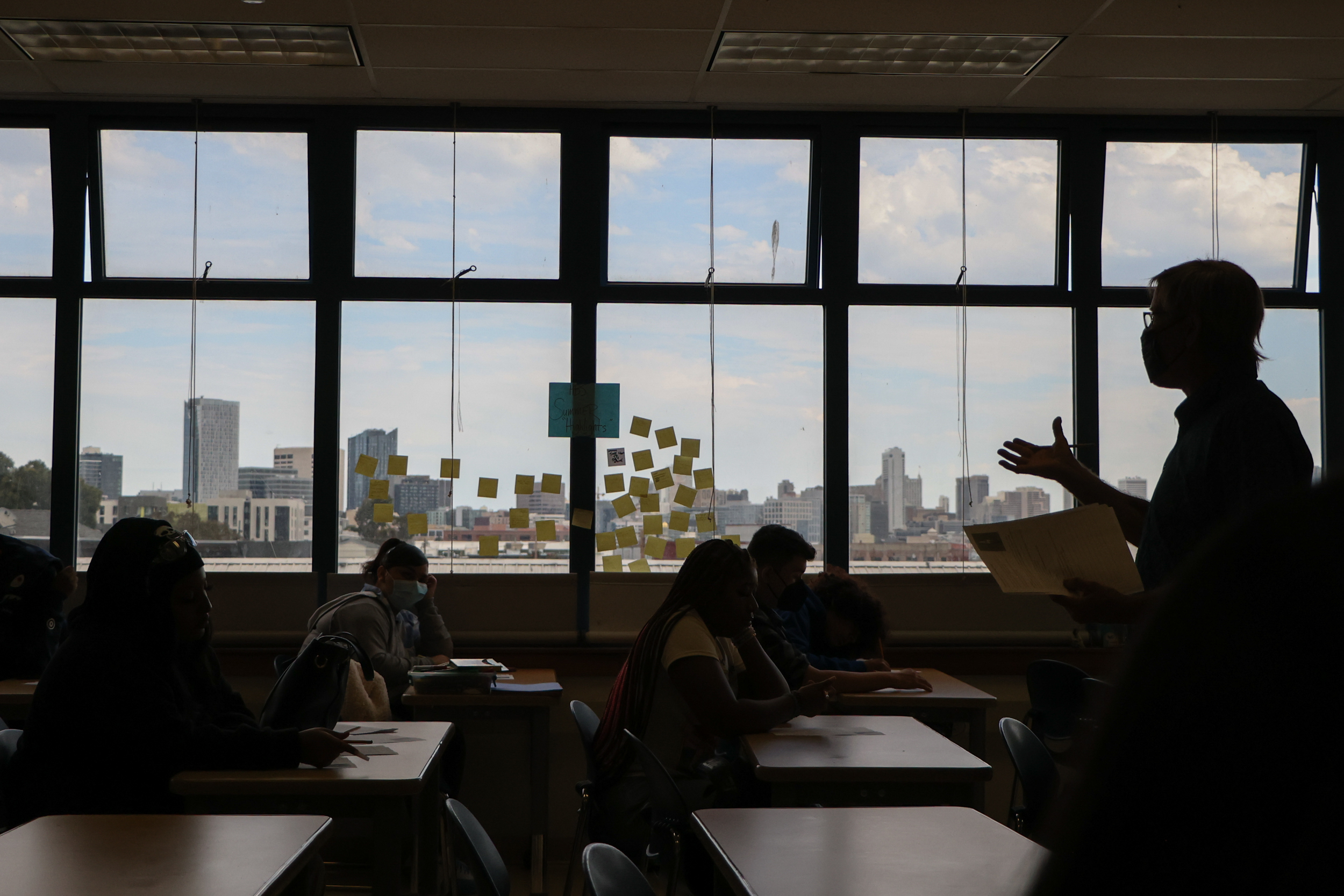The recent furor over the San Francisco Unified School District’s aborted plan to experiment with what it called “grading for equity” invoked a familiar specter: grade inflation.
As the district floated, then abandoned the plan — which would have involved allowing students to retake tests and excluding homework performance from grades — some critics suggested that the city’s K-12 schools are already overly generous in their pupil assessments. One attendee at a school board meeting asserted that grade inflation is “a huge issue across the district.”
Nationwide, high school GPAs have risen steadily for years — a trend that’s spreading to colleges too. An EducationWeek pundit lamented that “the evidence of grade inflation is incontrovertible.”
But is that true in San Francisco?
In a word, no.
The Standard analyzed GPAs over the last decade at SFUSD middle and high schools and found that the district’s B average held steady, along with standardized test scores. The picture that emerges is not of a school district lowering standards for disadvantaged kids, as critics of “grading equity” anticipated. Schools don’t shy away from giving Ds and Fs to struggling students — even those who are homeless or attend “second-chance” alternative schools.
New York Times parenting columnist Jessica Grose claimed that “test scores have gone down while grades have gone up” across the country amid fears that grade inflation has papered over “an education depression.” A Los Angeles Times analysis found the grades-and-test-scores disconnect across that city’s high schools in 2022. But SFUSD has defied that narrative.
In general, the better a school performs on standardized tests, the higher the average GPA, demonstrating that fears of grades being untethered from test performance are misguided.
However, in the case of prestigious Lowell High School, data from standardized testing provides ammunition to those who worry that grades have become divorced from test scores: Since 2014, proficiency on math standardized tests dropped from 85% to 66%, as the average GPA remained 3.4.
Of the schools where average grades rose the most over the past 10 years, test scores and GPA ranged widely — but none jumped more than roughly a third of a point.
At SFUSD middle schools, just over half of grades were A’s, according to a one-time district data release from fall 2022. In high schools, 48% of students were awarded the top mark in English and 41% in math.
Some educators say district policies make it harder for them to give out low grades. They point out that in order to fail a student, they must first contact the parents and often have to provide opportunities for makeup work.
“If a student is missing 90 assignments, administrators say it’s more equitable to truncate that to 15, which gives students an incentive to goof around,” said one SFUSD teacher who asked to remain anonymous for fear of reprisal.
But poor grades are hardly rare: 19% of high school math grades were a D or F, according to data from fall 2022, as were 15% of English grades.
Roughly one in three math grades given to hundreds of homeless high schoolers were Ds or Fs, showing that the district isn’t going easy even on the most vulnerable students. The alternative Ida B. Wells High, which enrolls students who have struggled in traditional academic settings, has an average 1.85 GPA, the lowest in the district.
‘The data should make you cry’
Studies have demonstrated the demoralizing impact of low grades on attendance, fueling a vicious cycle of truancy. At Ida B. Wells, 96% of students are chronically absent.
That dispiriting dynamic inspired Bay Area education consultant Joe Feldman, a former teacher and principal, to devise the system he called “grading for equity.” Feldman’s classroom experiences led him to believe that grades should reflect what students know by the end of the class — based on tests that can be redone, not on in-class participation.
“We’ve built a grading system that disincentivizes students to persevere when they make mistakes,” he said. “A zero on an early homework assignment can pull down the grade so that sometimes it becomes mathematically impossible for a student to pass the class by the second week.”
Even some of the proposal’s skeptics say the blowback has been more visceral than thoughtful. SFUSD analyst Paul Gardiner wrote in his blog: “In a different universe, one could imagine conservatives being the ones pushing for” the initiative, since “there are no participation trophies: you don’t get an ‘A’ just for showing up.”
But that message was lost last month when Feldman found himself in a firestorm after an article in The Voice of SF about “grading for equity” led to criticism from Mayor Daniel Lurie, Rep. Ro Khanna, and San Jose Mayor Matt Mahan.
Feldman got a call from an unknown number. “How could a 41% be a C?” the caller berated, citing the article’s opening paragraph.
It wasn’t, Feldman explained. He had no idea where that claim came from, he told the caller, and pointed out other inaccuracies in the article.
“I’m not surprised by the skepticism, because people are naturally skeptical of change,” Feldman said. “I was surprised people didn’t represent the ideas accurately, and that they didn’t reach out to me.”
Overlooked amid the blowup over grading for equity was newly released data showing that only 5.8% of Black sixth-graders are proficient in math. “The data should make you cry and make you want to pull your hair,” SFUSD Superintendent Dr. Maria Su told the board.
The fight over how students are graded may be missing the more urgent question: why so many are failing in the first place.
